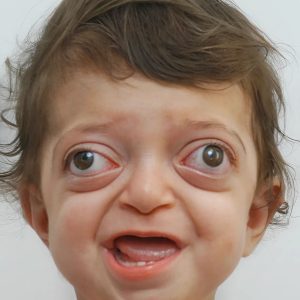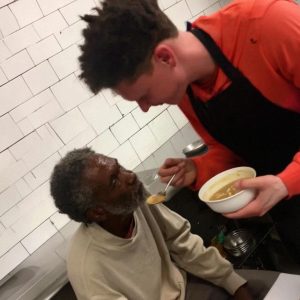Anna and Hope Richards were born into the world in an extraordinary and challenging way, fused at the chest and abdomen. From their very first moments, the sisters’ lives were intertwined, sharing not only a liver and diaphragm but also a major blood vessel connecting their hearts. This rare conjoining made even the simplest physical movements—sitting up, turning over, or lying comfortably—almost impossible. For their parents, Jill and Michael, the daily care of the twins required constant vigilance and coordination. They had to lift and hold the girls together, supporting their shared bodies while hoping for a day when the sisters might live independently. The unique bond between Anna and Hope was evident in everything they did; if one stirred or awoke, the other responded in synchrony, demonstrating a deep, almost instinctive connection between them.
The first months of the twins’ lives were spent primarily in the hospital, where nurses and doctors closely monitored their health and development. Medical staff observed how the sisters’ bodies functioned together, noting the challenges posed by their conjoined anatomy. Despite these obstacles, the twins demonstrated remarkable resilience, moving and reacting as best they could within the confines of their shared body. The limited physical independence created challenges not only for mobility and comfort but also for everyday interactions. Simple acts, such as breastfeeding, bathing, and even holding the girls separately, became complicated exercises in coordination and care. The parents’ constant hope centered on the possibility of surgical separation, but the risks were substantial due to the shared organs and intertwined circulatory systems.
The planning and preparation for separation surgery began in earnest when the twins were just over a year old. The medical team, comprised of seventy-five doctors and specialists, undertook months of meticulous preparation. Advanced imaging, including numerous scans and 3D modeling, allowed the surgeons to map out the twins’ shared organs and vascular connections in detail. These preparatory steps were critical in anticipating the complexities of dividing shared structures, reconstructing diaphragms, and ensuring that each child would have sufficient functioning organs to survive independently. The planning phase also involved extensive consultation among pediatric surgeons, cardiologists, anesthesiologists, and critical care specialists, all working collaboratively to ensure the best possible outcome for Anna and Hope.
On January 13, 2018, the long-anticipated surgery finally began. The procedure lasted seven hours and required exceptional precision and coordination. Surgeons carefully separated the shared liver, reconstructed the diaphragms, divided the connected blood vessels, and reconstructed each child’s rib cage and abdominal walls. The operation was so intricate that even the smallest miscalculation could have had life-threatening consequences. Throughout the procedure, the surgical team worked in harmony, guided by months of preparation and the shared goal of giving the twins the opportunity to live independent lives. When the girls were finally placed on separate operating tables, a profound moment of silence filled the room, symbolizing the significance of this life-altering achievement. For the first time, Anna and Hope were two separate individuals.
Following the surgery, the twins faced a period of recovery and adaptation. Anna was discharged first, followed shortly by Hope, and both girls quickly began to catch up in their development. The transition from a conjoined state to living independently required careful medical monitoring and support, but the sisters responded remarkably well. They learned to move, play, and interact as separate individuals, exploring their physical independence and engaging in the everyday joys and challenges of childhood. Laughter, playful arguments, and affectionate hugs became hallmarks of their new life, reflecting both the normalcy and the extraordinary nature of their post-surgical recovery. The twins’ progress was a testament to both the skill of the medical team and the resilience inherent in Anna and Hope themselves.
The emotional impact of the successful surgery on the family was profound. For Jill and Michael, every small milestone—each laugh, step, and expression of independence—was a reminder of the life-changing significance of the operation. The parents viewed each day as a “small miracle,” understanding that the successful separation had given their daughters a chance at full and autonomous lives. The family also celebrated the medical team’s expertise, recognizing the delicate balance of skill, planning, and determination required to achieve such an outcome. Beyond the physical restoration, the surgery allowed Anna and Hope to experience the psychological and emotional benefits of individuality, including personal agency and the ability to explore their environment without constraint.
Today, Anna and Hope are thriving as independent children, demonstrating the remarkable adaptability and spirit that characterized them even before their separation. They continue to share a deep bond, forged by their early experiences as conjoined twins, but now enjoy the autonomy to express themselves individually. Playtime, exploration, and everyday adventures have taken on a new dimension, as each child learns and grows in her own unique way. Their story serves as a testament to human resilience, the power of medical innovation, and the profound influence of hope and determination. For Jill and Michael, every day is a reminder of the courage, skill, and love that enabled their daughters to live separate, fulfilling lives—and of the extraordinary journey from shared struggle to individual independence.





